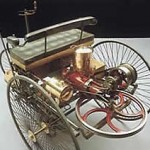In Lou Gerstner’s book, Who Says Elephants Can’t Dance, Mr. Gerstner is quoted as saying “I came to see, in my time at IBM, that culture isn’t just one aspect of the game – it is the game. In the end, an organization is nothing more than the collective capacity of its people to create value.” Businesses with great internal culture project the same outward. They are more productive as a business because their people are more productive individually and as a team. Leadership understands that happy and engaged people are more productive.
 Most everyone has worked in a business where the culture was bad. Where mistakes were punished, poor company performance is blamed on staff, and where dictatorship was confused with leadership. In these organizations, the average employee provides less than eight hours of productivity; taking advantage of every break, commiserating with other employees over e-mail or water-cooler encounters, arriving and leaving at precise times; putting in time for money.
Most everyone has worked in a business where the culture was bad. Where mistakes were punished, poor company performance is blamed on staff, and where dictatorship was confused with leadership. In these organizations, the average employee provides less than eight hours of productivity; taking advantage of every break, commiserating with other employees over e-mail or water-cooler encounters, arriving and leaving at precise times; putting in time for money.
In businesses with a great culture, where everyone’s ideas are respected, work enjoyment and creativity is fostered, mistakes are valued as learning experiences, and success and failure is owned as a team, employees regularly provide more than eight hours of productivity. They work thru breaks, come in early, stay late, eat lunch at their desk, all because they want to. All because they enjoy what they do and are thrilled to be a part of a winning team.
If your culture is great, results will be great. If your culture is poor or worse, your results are likely to follow. Culture and the resulting morale mean everything to your business. If you adopt the “beatings will continue until morale improves” style of management, you have missed the point.




